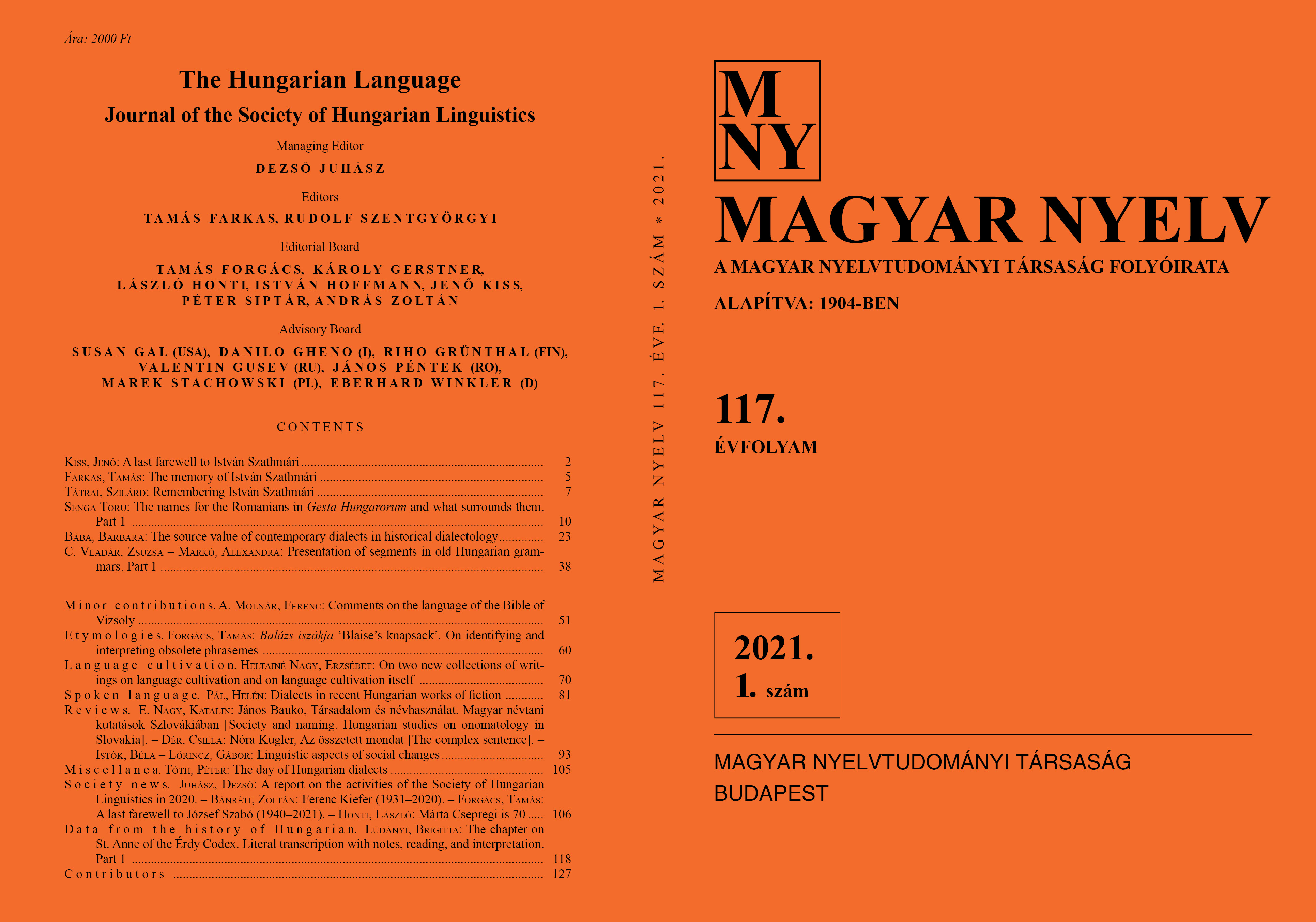Comments on the language of the Bible of Vizsoly
DOI:
https://doi.org/10.18349/MagyarNyelv.2021.1.51Keywords:
Bible translation, the Bible of Vizsoly, emphasizing function, figura etymologica, Endre AdyAbstract
The paper discusses chiefly the problem of how a biblical Hebrew syntagma containing an infinitive and a finite form of the same verb was translated in old Hungarian Bible translations, especially in the first complete one, the Bible of Vizsoly (1590, published in Vizsoly, Hungary) and its later, revised editions. In the Hebrew structures the infinitive has an emphasizing function. It was generally translated into old Hungarian either by an adverbial participle ending -va, -ve (-ván, -vén), e.g.: kérve kér ‘asking ask’ = ‘entreat’; or by a noun derived from a verb, in adverbial function: halállal hal ‘die with death’ = ‘surely die’. These biblical structures have also exerted an influence on the spoken and literary language (especially the poetry of Endre Ady †1919), and they form a special kind of figura etymologica.
Downloads
Published
Issue
Section
License
Copyright (c) 2024 Ferenc A. Molnár

This work is licensed under a Creative Commons Attribution-NonCommercial-NoDerivatives 4.0 International License.
Magyar Nyelv is a Diamond Open Access periodical. Documents can be freely downloaded and duplicated in an electronic format, and can be used unchanged and with due reference to the original source. Such use must not serve commercial purposes. In the case of any form of dissemination and use, Hungarian Copyright Act LXXVI/1999 and related laws are to be observed. The electronic version of the journal is subject to the regulations of CC BY-NC-ND (Creative Commons – Attribution-NonCommercial-NoDerivatives).
The journal permits its authors, at no cost and without any temporal limitation, to make pre-print copies of their manuscripts publicly available via email or in their own homepage or that of their institution, or in either closed or free-for-all repositories of their institutions/universities, or other non-profit websites, in the form accepted by the journal editor for publication and even containing amendments on the basis of reviewers’ comments. When the authors publicize their papers in this manner, they have to warn their readers that the manuscript at hand is not the final published version of the work. Once the paper has been published in a printed or online form, the authors are allowed (and advised) to use that (post-print) version for the above purposes. In that case, they have to indicate the exact location and other data of the journal publication. The authors retain the copyright of their papers; however, in the case of an occasional secondary publication, the bibliographical data of the first publication have to be included.



